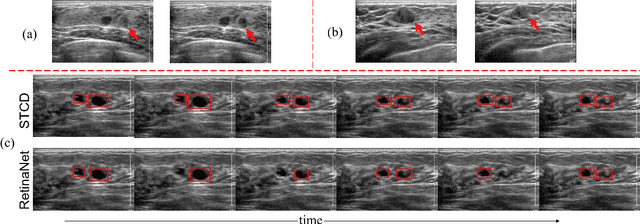Weiping Yu
Consistency-based Active Learning for Object Detection
Mar 23, 2021



Abstract:Active learning aims to improve the performance of task model by selecting the most informative samples with a limited budget. Unlike most recent works that focused on applying active learning for image classification, we propose an effective Consistency-based Active Learning method for object Detection (CALD), which fully explores the consistency between original and augmented data. CALD has three appealing benefits. (i) CALD is systematically designed by investigating the weaknesses of existing active learning methods, which do not take the unique challenges of object detection into account. (ii) CALD unifies box regression and classification with a single metric, which is not concerned by active learning methods for classification. CALD also focuses on the most informative local region rather than the whole image, which is beneficial for object detection. (iii) CALD not only gauges individual information for sample selection, but also leverages mutual information to encourage a balanced data distribution. Extensive experiments show that CALD significantly outperforms existing state-of-the-art task-agnostic and detection-specific active learning methods on general object detection datasets. Based on the Faster R-CNN detector, CALD consistently surpasses the baseline method (random selection) by 2.9/2.8/0.8 mAP on average on PASCAL VOC 2007, PASCAL VOC 2012, and MS COCO. Code is available at \url{https://github.com/we1pingyu/CALD}
Towards Resolving the Challenge of Long-tail Distribution in UAV Images for Object Detection
Nov 07, 2020



Abstract:Existing methods for object detection in UAV images ignored an important challenge - imbalanced class distribution in UAV images - which leads to poor performance on tail classes. We systematically investigate existing solutions to long-tail problems and unveil that re-balancing methods that are effective on natural image datasets cannot be trivially applied to UAV datasets. To this end, we rethink long-tailed object detection in UAV images and propose the Dual Sampler and Head detection Network (DSHNet), which is the first work that aims to resolve long-tail distribution in UAV images. The key components in DSHNet include Class-Biased Samplers (CBS) and Bilateral Box Heads (BBH), which are developed to cope with tail classes and head classes in a dual-path manner. Without bells and whistles, DSHNet significantly boosts the performance of tail classes on different detection frameworks. Moreover, DSHNet significantly outperforms base detectors and generic approaches for long-tail problems on VisDrone and UAVDT datasets. It achieves new state-of-the-art performance when combining with image cropping methods. Code is available at https://github.com/we1pingyu/DSHNet
Semi-supervised Breast Lesion Detection in Ultrasound Video Based on Temporal Coherence
Jul 16, 2019



Abstract:Breast lesion detection in ultrasound video is critical for computer-aided diagnosis. However, detecting lesion in video is quite challenging due to the blurred lesion boundary, high similarity to soft tissue and lack of video annotations. In this paper, we propose a semi-supervised breast lesion detection method based on temporal coherence which can detect the lesion more accurately. We aggregate features extracted from the historical key frames with adaptive key-frame scheduling strategy. Our proposed method accomplishes the unlabeled videos detection task by leveraging the supervision information from a different set of labeled images. In addition, a new WarpNet is designed to replace both the traditional spatial warping and feature aggregation operation, leading to a tremendous increase in speed. Experiments on 1,060 2D ultrasound sequences demonstrate that our proposed method achieves state-of-the-art video detection result as 91.3% in mean average precision and 19 ms per frame on GPU, compared to a RetinaNet based detection method in 86.6% and 32 ms.
 Add to Chrome
Add to Chrome Add to Firefox
Add to Firefox Add to Edge
Add to Edge